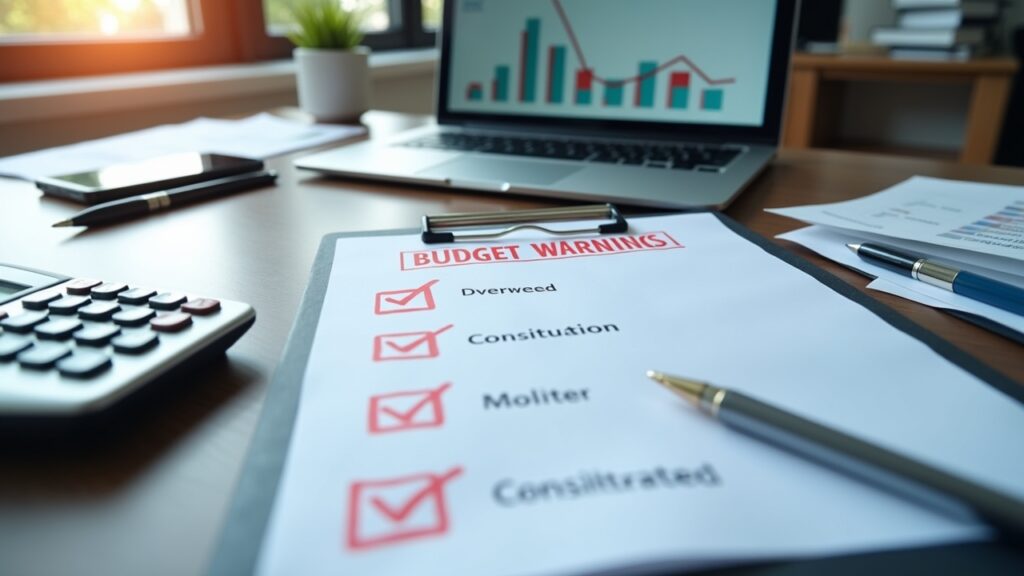Advertisements
Let me tell you about the time I discovered I was spending $247 a month on streaming services I barely used. Yeah, you heard that right! It wasn’t until I did my first proper budget audit that I realized how much money was literally disappearing from my bank account each month.
A budget audit might sound like something only accountants do, but trust me – it’s actually one of the most eye-opening exercises you can do for your financial health. Think of it as a financial check-up, kinda like going to the doctor but for your wallet.
What Exactly Is a Budget Audit Anyway?

So here’s the deal – a budget audit is basically when you take a hard look at where your money’s actually going versus where you think it’s going. I remember sitting down with three months of bank statements spread across my kitchen table, feeling totally overwhelmed.
The process involves reviewing all your expenses, income sources, and financial goals. You’re essentially playing detective with your own spending habits. And boy, the stuff you’ll discover!
When I did my first audit, I found subscriptions I forgot I had, gym memberships I hadn’t used in months, and don’t even get me started on my coffee shop addiction. The numbers was shocking – I was spending almost $400 monthly on things I didn’t even remember signing up for.
Getting Started: The Tools You’ll Need
You don’t need fancy software to start your budget audit. Here’s what worked for me:
- Bank statements from the last 3-6 months
- Credit card statements
- A simple spreadsheet or even good old pen and paper
- About 2-3 hours of uninterrupted time (I know, I know…)
- Maybe some coffee or tea to keep you going
I’ve tried apps like Mint and YNAB (You Need A Budget), and they’re great for ongoing tracking. But for your first audit? Sometimes manual is better because it forces you to really look at each transaction.
The Step-by-Step Process That Actually Works
Alright, let’s dive into how to actually do this thing. First, gather all your financial statements – and I mean ALL of them.
Start by categorizing your expenses. I use categories like housing, transportation, food, entertainment, and the dreaded “miscellaneous” (which was way too big in my case). Don’t judge yourself during this part – just document everything.
Next, calculate what percentage of your income goes to each category. The 50/30/20 rule suggests 50% for needs, 30% for wants, and 20% for savings and debt repayment. My first audit showed I was at more like 70/25/5 – yikes!
Finding the Money Leaks
This is where it gets interesting. Look for recurring charges you don’t recognize or use anymore. I found a magazine subscription from 2019 that was still charging me $12.99 monthly!
Also check for duplicate services. I was paying for Netflix through my cable company AND directly to Netflix. That’s $15 a month I was just throwing away.
Restaurant and takeout spending usually shocks people the most. Mine totaled over $600 one month, and I honestly thought I was being “good” about cooking at home.
Making Sense of What You Find
After my first audit, I felt a mix of shame and excitement. Shame because, well, how did I let it get so bad? But excitement because I’d finally identified where I could save money without drastically changing my lifestyle.
The key is to be realistic about what you can cut. Sure, I could’ve eliminated all entertainment spending, but that’s not sustainable. Instead, I focused on the low-hanging fruit – those forgotten subscriptions and duplicate services.
I also discovered patterns in my spending. Like how I’d always overspend after stressful work weeks (retail therapy, anyone?). Knowing these triggers helped me plan better.
Creating Your Action Plan
Once you’ve completed your audit, it’s time to make changes. Start small – I began by canceling just three subscriptions in my first week.
Set up calendar reminders to review your budget monthly. A full audit? Maybe quarterly is enough. But regular check-ins prevent you from sliding back into old habits.
Consider automating your savings before you can spend it. After my audit, I set up automatic transfers to savings right after each paycheck. What you don’t see, you don’t spend!
Your Financial Wake-Up Call Awaits

Look, I get it – doing a budget audit sounds about as fun as a root canal. But that first audit literally changed my financial life. Within six months, I’d freed up over $500 monthly just by eliminating waste.
The beauty of a budget audit is that it’s not about depriving yourself – it’s about making sure your money goes toward things you actually value. Maybe you love your gym membership but could care less about cable TV. Great! Keep what brings you joy and ditch what doesn’t.
Ready to take control of your finances? Start with just one hour this weekend. Pull those statements, make some coffee, and prepare to be surprised by what you find. And hey, if you’re looking for more practical money tips and real-life financial stories, check out other posts on Cashflow Zen – we’re all about making personal finance less scary and more doable!




[…] you’re looking for more practical money tips that actually work in real life, check out other posts on Cashflow Zen – we keep it real around […]